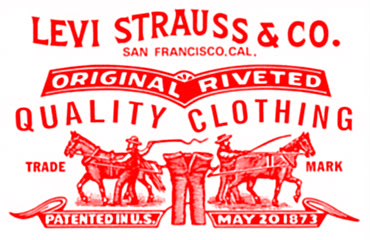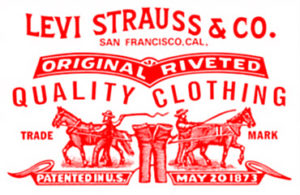
05 Mar Levi Strauss and Co. History

Levi’s Levi Strauss and Co. History
By Emily Blair
The Iconic name Levi’s came from Bavarian born dry goods merchant Levi Straruss. In 1853 he immigrated to America, eventually settling in San Francisco, California. This is where he opened the West coast branch of his brother’s wholesale dry goods business based in New York, called J. Stratuss Brother & Co. He eventually renamed the company Levi Stratuss & Co. and is name we know today. Jacob Davis, a Nevada based tailor came up with adding riveting to mens work pants to make them last longer. Davis, being a customer of Levi, shared this with him who loved to idea, resulting in a partnership and in 1873 the first blue jeans came to life. Fast-forward many decades and thousands of jeans later, Levi Stratuss & Co. are a house hold name. The iconic red label and brown patch are still worn and produced today.
How has Levi’s influenced fashion?
Levis original purpose was for utility. Miners, farmers, construction workers and cowboys needed durable clothes while working. Female cowboys would often wear their husbands Levis while working on the ranch.
Western Hollywood
As Hollywood captivated viewers with rugged cowboys, they all sported Levi’s 501’s. Popularized by movie stars like John Wayne, people wanted that look
Women
In 1934 women’s Levis were created. The name “Lady Levi’s were coined and even seen in Vouge Magazine. In the 50’s females wearing pants started to become more socially acceptable and iconic pictures on Marylin Monore wearing Levis confirmed this.
Post World War 2
Once men returned home, soldiers formed many Biker Crews to recreate the sense of belonging and those craved that war like adrenaline. Bikers adapted a denim on denim uniform of the Levis Trucker jacket with their crews symbol on the back. Paired with rugged, ripped and greasy Levis 501’s –the dirtier the better.
Rockers and Outcasts
As the rock/punk music and lifestyle became increasing popular within youth, a staple outfit would be tattered Levi’s jeans and a t-shirt. Many schools banned students from wearing Levis as they were associated with outlaws and “trouble makers”. At the time, heart throbs James Dean and Marlon Brando played characters wearing this very look, creating an even higher demand.
By the 60’s – 80’s hippies, activists, artists and the LGBTQ community adapted the trend of Levi jeans. Usually altered with patchwork, paint or tears; this was a popular choice of pants among the groups fighting the revolution.
In the 90’s as hip hop music and fashion gained momentum; a popular style among hip hip singers, rappers, as well as the skater community wore over-sized baggy jeans.


